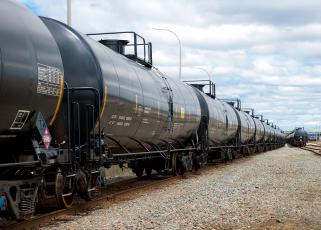The United States has the most complex and efficient refining industry in the world, but we also have less refining capacity than we used to. After more than two decades of growth in which the United States became the world’s largest refiner by volume, our industry has contracted. We’ve lost 1.1 million barrels of daily refining capacity over the course of the global pandemic with at least seven facilities shuttering, closing units or beginning the transition away from petroleum processing.
With a global energy crunch underway, much focus has been placed on crude oil supply and demand. And while this is the primary driver of our current price challenges, it’s not the only factor. Refining matters too. Crude oil has no utilitarian value until it runs through a refinery and gets processed into fuels like wholesale gasoline, diesel and jet fuel. Because of this, it’s not an overstatement to say that energy security requires a strong refining sector.
Where the issue of refining capacity is concerned, it’s important to understand what refining capacity is, why we’ve lost capacity in the United States and how policies can advance the competitiveness of our refineries in the global market. Let’s take a look:
What is refining capacity?
- Simply put, refining capacity is the maximum volume of crude oil that refineries can process in a day.
How much refining capacity does the United States have?
- At the start of 2020, the United States had the largest refining industry in the world by a stretch, with 135 operable petroleum refineries and total refining capacity of 19 million barrels per day. Today, we have 128 operable refineries with total crude distillation capacity of 17.9 million barrels per day—a loss of 1.1 million barrels.
- In this same period of time, the world lost a total of 3.3 million barrels of daily refining capacity. Roughly 1/3 of these losses occurred in the United States. With this realignment, and planned refinery openings and capacity expansions in Asia, trade press reports suggest China will overtake the United States as the country with the most refining capacity by year’s end.
Is COVID the only reason why the U.S. is losing refining capacity?
- No. A combination of factors is responsible for the United States’ loss of refining capacity. Choices to convert or shutter refineries are made very carefully—factoring in present and projected future fuel demand, the political environment as well as facility locations and their individual market access. Political and financial pressure to move away from petroleum derived fuels, costs associated with federal and state regulatory compliance and facilities’ singular economic performance all inform these decisions. The sharp drop in fuel demand over the course of the pandemic certainly sped up the timeframe for refining contractions, closures and transitions, but many of these moves were already planned or underway, something Chevron CEO Mike Wirth acknowledged in a recent interview.
- Refining is a long-view industry. Facility closures and transitions are not knee-jerk decisions, and they were never intended to be undone. They are meticulously reasoned and based on far more than short-term, transitory data.
Is it possible to reverse closures and quickly restart facilities?

- No. Lost capacity cannot be restored with the flip of a switch. We don’t just have 1.1 million barrels of daily capacity sitting there idle and ready to go back into production. More than half of the refining capacity lost in the United States over the past couple years is in the process of being transitioned to full-time renewable fuel production or it’s being dismantled.
- Even if that wasn’t the case, reopening a refinery is a major effort. It would require significant lead time to inspect machinery and attain necessary operating permits. Staff would need to be reassembled and/or recruited and trained. And the facilities themselves would need to be reintegrated with supply chains. A hypothetical restart is not a quick-turn project, and the investment cannot be based on short-term data.
How is lost refining capacity affecting fuel prices and production?
- Less refining capacity means less maximum fuel production globally. As a result of tighter supply, fuel purchasers are willing to pay more for refined products. They have increased bids to buy and secure finished fuel which has pushed prices up throughout the global market.
- In regions that have been most affected by refining capacity losses—such as the U.S. West Coast and Mid-Atlantic—the loss of local petroleum fuel production is contributing to higher prices and affecting regional demand for imports of gasoline, diesel and jet fuel from the global market. Because of infrastructure limitations and an uncompetitive shipping environment, economic access to domestic crude oil and refined products is limited.
- Even with less capacity, United States refiners are working around the clock to produce fuel for consumers. Our refining sector is unmatched in terms of utilization. Nationally, and even with some regions undergoing planned facility maintenance, American refiners are running at 93% capacity. Along the Gulf Coast, utilization is 95%, and on the East Coast, 98%.
What does lost capacity say about the future of liquid fuels?
- In much of the world, demand for liquid fuels is almost back to pre-pandemic levels. Refining capacity is not. This mismatch has created a shortfall in refined product that has been exacerbated by the sudden decrease in oil and refined product from Russia and China’s decision to stop contributing fuel to the global market. New capacity is coming, though it is intended to satisfy demand growth in Asia, the Middle East and Africa, rather than replace what’s recently been lost. In these markets, roughly three million barrels of new daily capacity will come online by the end of 2022, with an additional 1.3 million barrels per day to follow in 2023.
- Capacity expansions at existing refineries—rather than new facility construction—are underway in the United States as well, primarily aimed at increasing refinery throughput of U.S. light sweet crude oil.
The U.S. refining sector has experienced significant capacity losses over the last few years for reasons beyond COVID, though the pandemic certainly did fast-track decisions to repurpose or shutter facilities. Restarting those facilities is not an option in most cases as they have already been dismantled, converted or are in the conversion process. In other cases, returning idled capacity to safe operation would be so labor intensive and time consuming that any market impact would be years out.
Refiners remain focused on maximizing the production of fuels from our operable facilities, ensuring that the capacity we do have is running efficiently and cost effectively to supply U.S. consumers and meet global energy demand.
The Biden Administration has an immediate opportunity to support refiners by offering a rational and achievable Renewable Fuel Standard rule for 2023 and future years. Refineries are the ones responsible for paying for RFS compliance. When government sets yearly RFS standards that are too aggressive and out-of-touch with consumer demand for gasoline and domestic advanced biofuel production, compliance costs for the program go up. Right now, the RFS is adding about 20-cents to the cost of every gallon of wholesale gasoline and diesel manufactured in the United States. The Biden Administration can fix this by modernizing U.S. fuel policies and setting workable RFS standards for the years ahead. Every gallon of U.S. gasoline and diesel will reflect the impact.
The American Fuel & Petrochemical Manufacturers (AFPM) is the leading trade association representing the makers of the fuels that keep us moving, the petrochemicals that are the essential building blocks for modern life, and the midstream companies that get our feedstocks and products where they need to go. We make the products that make life better, safer and more sustainable — we make progress.


